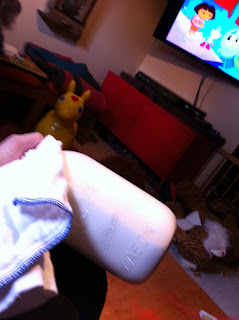Springtime isn't normally the time that I think much about wild mushroom foraging. Though I've gathered Verpa Bohemica, or what's known as false morels, the fact that Verpas aren't the "real deal" (though I've eaten them without incident) is fairly recent news to me. Last Spring, through various internet sources I learned that Verpas, which can be found a-plenty amongst cottonwoods along river banks around mid-late March, are not true morels. Since then, my Spring mushrooming hopes had been dashed.....until this past Saturday.
The lovelies pictured above are true morels. While out at my brother's property, working on the garden, Todd discovered these growing on the verges of a big pile of bark mulch which he had delivered last year. More brown/black than Verpas and with the biggest indicator, that being the stem and cap completely attached (verpa caps sit on top of the stem like a cup), these were clearly of the Morchella genus. The spore obviously came in with the bark mulch. So now, fingers crossed, they will continue to sprout in that spot and perhaps even in the other places around Todd's property where some of the mulch was spread. I had heard that they can be found on Sauvie Island in May, but I still think they are rather hard to find if you pointedly go out foraging for them. Definitely harder than the other mushrooms I've
hunted.
The unexpected harvest, along with the usual-- fennel and purple broccoli.
I harvested about half a pound of morels from around the mulch and made a shallot and cream based sauce served over pasta for dinner last night. SO GOOD. My new favorite I think, next to lobster mushrooms.
The biggest one.
I love it's "gnome-like" personality.








































